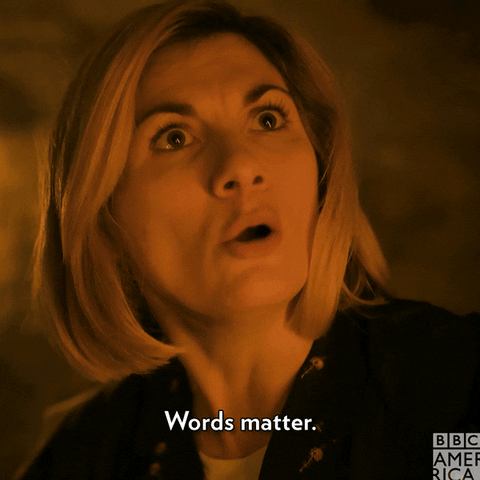Copywriting tips that actually work.
Copywriting is hard. While only a true writer would be able to relate with that statement in its entirety, as a marketer, you would agree that writing copy that is delightful, creates impact, and trumps your competition is not really a cakewalk of any sort whatsoever.
It takes time, effort, and years of experience (sometimes, even decades), to be able to use words in a way that it ends up persuading the reader to take action.
Yet, very few executives and marketing leaders truly understand that. As a result of which, the expectation on copywriters, or anyone responsible for creating it for their mailers, posts, campaigns, and more, has been soaring like anything.
Realizing how there is very little actionable stuff out there to guide people on how to do copywriting for their blog posts, essays, or any other form of written content well, I decided to expand on some expert tips shared by Ross Simmonds, a leading marketing influencer, in this Twitter thread.
Without any further ado, let’s dive right into it.
Copywriting tips to create high converting content
1. Make sure to keep the ‘skim readers’ hooked
It is a well known fact that the human attention span is ever decreasing, with it now being lower than that of a jellyfish, at less than 10 sec. People are crunched for time and bandwidth, and it shows in their actions in everything that they do.
From opting for that instant coffee instead of a properly brewed one to choosing fast cars instead of taking the bus to work, behaviors are changing at the speed of light. And the same is true for how people consume content.
No matter how interesting, comprehensive, or engaging your blog post content is, there are always a few who could not care less about it, and only end up skimming through the headings of your content piece.

Well, you can not blame them for trying to put efficiency to their life and maximizing their productivity, but what you can do is make sure your content is safe for their consumption.
Let’s call these people the ‘skim readers’, and what they essentially do is just go through the headings or main bits (usually the highlighted ones, images, or so on) and try to extrapolate information from there.
If there is something remarkably interesting they come across in your post, they might as well just highlight it, add it to their Pocket notes, or bookmark your blog to read it later. Never would they spend more than the time they had planned to give to your blog post when they first started reading it.
Hence, to cater to such people, the approach you need to take is ensuring your content has enough clarity for a skim reader to consume it without feeling disappointed about the outcome. If you do want to increase the readability and shareability of such a content piece, make sure you cater to both sets of audiences – the hooked reader, and the skim reader, and anyone else too, if there exists one for your niche.
PS. Read this: Storytelling in copy and content is great, but don’t get boring.
2. Sprinkle ‘bucket brigades’ across your content
The entire point of effective copywriting is the dissemination of information to a reader in a way which delights them, makes them feel related to your content, and fits well in their lives by solving a specific purpose. And what better way to structure your content than to use something called bucket brigades.
If you have not heard of the term before, bucket brigades refer to a bridge phrase which is most often used by copywriters as a device to keep their audience interested. These are used for continuation, or when you might be stuck when trying to link two subjects or paragraphs together. Here are some examples from Ross Simmonds’s thread:
Hear me out:
But that’s not all:
You might be thinking:
All such phrases make people pause and want to read more. As they say, curiosity did kill the cat. Using them judiciously and effectively across your write up will only make it even more interesting and readable, bringing us back to what we discussed at the start of this point.

However, one thing to note is to never overdo using these elements, or any kind of those for that matter, in your content, else you will end up looking like you are trying too hard to please your audience. And if there is one thing people hate more than anything, is getting patronized when there is no need to be.
One of the biggest reasons some content does well for the same topic and ideas presented and some other does not, is due to the difference in how readable one is to the other. Bucket brigades, by their very nature, are a group of words which makes it super easy to be read. And, any content that has a good combination of short and long sentences is more readable than one that does. Wouldn’t you agree? Most would. See what I did there?
3. Build up your reader, prospect, or customer’s pain early on
Why do you think people come to read your content? Why do people do anything at all? At the heart of it, all of it stems down to this one aspect of life – moving forward. There are jobs to be done in life, and each person is simply moving on to the next one they want to take on. Your content is a solution to the problem which they are currently exploring, and that’s the job you are fulfilling in their lives – solving for their pain points.
While this isn’t so much as a copywriting tip as it is just a suggestion to improve how you tell the story you want to tell, but people really like when the build up in your content is about their problems.
So, it becomes imperative for you to include about how you are going to help them, in as much detail as possible, and as early on as possible.
Your job as a content creator, or copywriter is to be able to convince the reader about the problem that exists in their lives, and how the product you are trying to bring their attention to solves it with much ease. We know it sounds easier said than actually executed in real writing, but the mindset is all that matters when it comes to such an approach to how you do content.

Think about all of the most remarkable or memorable ads, content, or campaigns from your memory. What do they all have in common?
It is the fact that you are able to relate with them in a way that only you do. They have happened to strike such a chord with you that whenever you think of doing a job in your life, the most relevant product which could help you comes to your mind almost instantly.
Hungry? Grab a snack. Need a new phone? Apple. Want to have a cheeseburger? McDonald’s. You get the drift.
4. Don’t be niggardly with your words
See what we did there? We chose a word which isn’t so common in the spoken lexicon, and only the most advanced English readers would remember using it commonly, yet, we gave it a shot and used it in our draft.
The point is, words are all you have, and you should make sure you use them in the most efficient and appropriate way possible. What needs depth, needs to be elucidated in context, and what needs to be concise, needs to be short.
In each and every paragraph you write in your blog post or essay, make sure that you do not end up watering down your thoughts or perspectives. Your piece is your opinion which is going to be out in the open for the world to read and comprehend, it’s the only chance you are going to get to be able to do that, so you make sure there are no misconceptions or facts left to be assumed by your reader.

You have just got to learn to embrace the power of words in your ledes, headlines, sub heads, and even far beyond that to make sure what you are writing is really the creme de la creme of how the said concept, topic or content could have been touched upon.
If you are someone who ends up writing too little content and then think of expanding it further, do not.
The better approach is to start big and ensure that you are able to put your mind across in the best way possible.
The goal is not to reach a specific word limit. Rather, it is to be able to be thorough with your communication without making the reader feel like they want to sleep through it.
5. Mix up your content with quotes whenever and wherever possible
People love reading quotes. For two reasons specifically.
One, it helps them gain perspective from another person and understand their point of view. As human beings, we crave for validation and belonging, and doing so helps us to that end.
Secondly, it gives them confidence that what they are reading or hearing has been vouched for by two or more than two people, again, all of this simply ties back to what we just talked about.
Hence, it is a great way for you to make your content more engaging by including quotes from people from all sorts of experience.
Whether it is your customer, competition, an influencer from your niche, or even an employee from your work force, bringing in an external train of thought into the melting pot of ideas brewing in your content pieces will only light it up even further.
If you are struggling with figuring out how to go about collating quotes for your piece of content, Twitter can be a great place to start. You can simply use the advanced search feature to search for the specific keywords and people you would like to get a bite from.

Another way to achieve the same goal is to do an outreach email to the prospective influencers or people from your domain you would like to feature.
Make sure you make the email crisp, personalized, and clearly defines the task and the purpose of it, or else you risk being taken as someone who is wasting their precious time.
6. Avoid massive blocks of texts at once
As a content marketer, writer, copywriter, or anyone responsible for writing content for any sort of business function, campaign, or goal, it is your responsibility to ensure that the content you have written is not a drag to read for your audience.
More often than not, one of the mistakes that not so seasoned writers, or people not related to the craft (we’re seeing you!) end up making their blog post seem like an editorial column, and not in the sense of the ideas presented, but how it looks visually.
Buddy, if your audience wanted to read one, they’d go elsewhere on the internet, or better, get a magazine.

The entire reason people prefer to read stuff online through publications and blog posts is to have a big chunk of insights and information being disseminated in a short period of time and effort they need to expend to be able to achieve that.
When you include massive blocks of text in your content, you end up making the rookie mistake. So take not doing so as the copywriting tip #6 you take away from this blog post.
7. Incorporate your personality into your content
Think about it, whenever you are reading a piece of content, would you prefer if it had a human aspect to it, or just the boring, old write-up that lacks any kind of punch?
As humans, we crave for stories and connections as much as the next person. And the easiest way you can make your content more relatable for your audience is to introduce your own unique personality into it.
What we mean when we say personality, is to ensure that your content depicts the mannerisms, actions, and behaviors that are unique and individualistic to you. The lack of which will make your content seem boilerplate and generic.
Now, one way you can achieve this is by writing how you would speak about the topic to another person, or even in public.

By doing so, you would not be shying away from including aspects of your communication that are specific just to your thought process, and use of language. Once you start with this, you will realize many different ways to make your content feel even more personable than it already would be.
One great example for this is Ross Simmonds’s thread itself, how he uses the words to make the Twitter thread feel like a story he is telling to the world at large goes to show how content that feels personal to an audience, converts and engages better than any other type.
8. Embrace bullets, pointers, and sub sections
This might seem kind of an obvious piece of advice to mention, but hey, better safe than sorry always, right?
The same is true for the timeless content you are hoping to create. Once done well is done well forever, so it’s kind of important to even pay a good amount of attention to the trivial things that exist out there in the open.
In your blog posts and essays, make sure you are embracing bullets, pointers, and sub-sections judiciously, generously, and most of all, appropriately.
Why do we say this? Because there is a sweet spot between maximizing readability of a piece of content and making it seem like a hodgepodge of words that do not make any sense.
In case you are wondering as to how you can even go about improving this aspect of your content, one of the best ways to go about it is to start primitive, and work your way upwards.
You might wanna start with incorporating more reading into your daily schedule, picking up a Wren & Martin for your practice of the rules, among many others. So, make sure that you are doing it.
9. Break the fourth wall as frequently as possible
In arts, especially cinema, the concept of breaking the fourth wall refers to the actors acknowledging the existence of the audience and speaking to them directly.
When they do this, the fictional world gives way to the literal reality of the medium: A group of actors is putting on a performance for a live audience or a camera.
You need to do the same for your content.
What we mean here is that your ideas and words need to be raw, authentic, and most of all, your own.
When you speak to your audience with a kind of panache that is yours and yours alone, they will be able to relate to your content better, and be able to do something which we will talk about in the next tip.
10. Make your audience feel the emotions
Now, this is the most important tip of all that we have shared with you. Emotions are what drives humans to take any kind of action.
Feeling sad? Change the mood. Feeling happy? Work on moving forward, and so on.
People behave the way they do because of how they are feeling in a particular moment.
Your goal as a content writer is not just to write words on a piece of digital paper, it is to generate a certain emotion within the minds of your audience, that it persuades them to take the action they are supposed to. Or better, the one that you want them to take.

If your audience is connected to your content on an emotional level, it becomes way easier for you to be able to break the fourth wall and make them commit to something bigger.
They say how you do one thing is how you do all things, the same could not be more true for how you consider your writing to be.
11. Add value to your readers through your words
Now this one is a no brainer, but we will still mention it, just because it is by far the most important aspect you need to keep in mind when you are writing your essay or blog post.
Today, readers expect to take away something from everything that they consume, and this goes on not just for content in a professional setting (which is what you would mostly be focussing on if you are reading this), but also to Netflix, YouTube, and Spotify.
While attention spans might be ever decreasing, the curiosity and hunger to expand on their knowledge has not one bit.
People have started valuing their time even more than they did some years ago, all thanks to late stage capitalism, but this is how it is now. So, as a brand, publication, or a writer, the onus comes on you to deliver what they least expect you to: add value to their lives.
Ace the content marketing game, one tip at a time
Well, well, well, now that we are at the end of this goldmine of insights and tips (thanks, Ross!), it is time to acknowledge how it is one thing to agree with them, and entirely different to put it in action and execute them flawlessly.
While the latter is tougher and would require you to stretch your comfort zone and boundaries, the rewards you end up reaping will be all worth it for sure.
On that note, we wish you all the best on your journey to overhaul your blog posts, essays, eBooks, or literally any other format of content to its next evolution.
Some of these tips might be universally applicable to everyone, however, you must feel free to bring your own flavor to these and personalize them based on your use cases and work style.
Happy writing!




